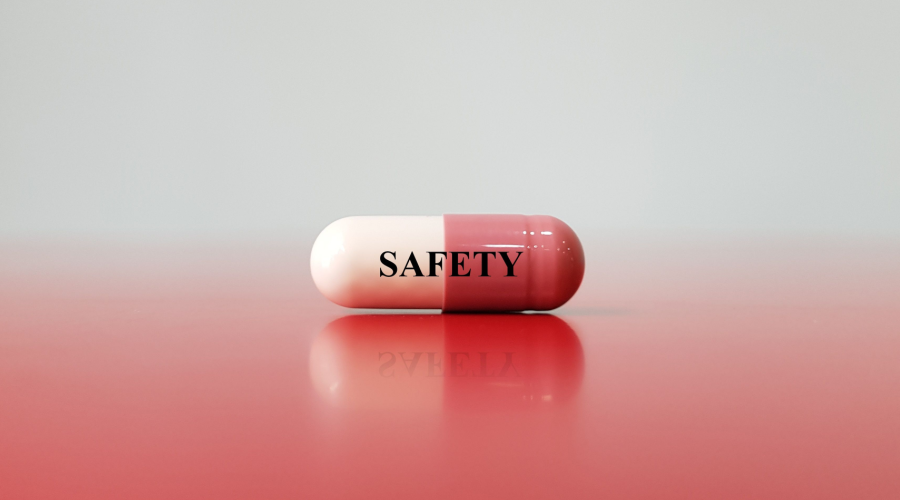During a routine surgery, a man suddenly started to hemorrhage. His liver failed, his kidneys failed, and his brain began to shut down. The ICU performed dozens of tasks to get him stable including inserting three lines in quick succession — into an artery, jugular, and chest to transfer gallons intravenous fluids. Add to that a breathing tube, a ventilator, a dialysis machine, and three drains.
Even though less than five percent would survive this, the man began to get better. All in the interventions were working.
But all of a sudden, he got worse. He developed an infection and looked as if he would follow the statistic into the grave.
Before he did, the team discovered the source of the infection: a contaminated line. One small, routine task that had nothing to do with expertise or intelligence almost killed the patient.
What could have prevented the error? A simple checklist, argues Atul Gawande, a surgeon and author of The Checklist Manifesto. Line infections are common, but when the right precautions are taken, they are preventable. Those precautions get lost in the chaos of the ICU, though, causing one small misstep to become life-threatening. Once hospitals started using a 5-step checklist for line insertions, infections significantly dropped.
This is just one of the many stories Gawande details in his book about jobs with complex environments — from hospitals to airplane cockpits — that became dramatically more efficient and safe through the implementation of a checklist. Gawande himself implemented checklists in eight hospitals, with striking results. “The average reduction in complications was 36%,” he told Harvard Business Review. “We cut deaths by almost half, all those results being highly statistically significant.”
A checklist lays out the minimum number of necessary steps to do something correctly and prevents professionals from skipping the small things that could have poor consequences. When you’re dealing with powerful medications, even small errors can turn dangerous or deadly for patients. And checklists that hold pharmacy staff accountable are an inexpensive way to improve outcomes. By implementing Gawande’s checklist system, you can make your pharmacy a simpler environment for staff and a safer place for patients.
Checklists can also make your business more efficient, improving workflow and productivity. “In the business world, really the only difference is that the complexities are no better,” Gawande said. “The situations where we have a mix of basic things that are supposed to happen and judgment that has to be used well in critical stressed circumstances, we’ve missed, I think, many of the chances to understand how the discipline of something as low tech and simple as checklists can play a role.”
Use these tips from The Checklist Manifesto to create lists that make your pharmacy safer, more efficient, and more effective.
Acknowledge your problems
In order to develop a foolproof checklist for the pharmacy, you have to identify every opportunity for something to go wrong. In an operating room, both people and machines have to be performing at the top of their game for everything to go smoothly — the same goes behind the counter of your pharmacy.
When you look around your pharmacy, there are plenty of places things can go wrong. A robot might dispense a broken tablet, resulting in a patient not getting their full prescription. Your pharmacy staff could be experiencing the fatigue and stress that come with professional burnout and dispense an entirely wrong prescription.
Pharmacists and pharmacy technicians receive extremely specialized training, but specialization alone can’t prevent every error, Gawande argues. By building checklists for your pharmacy operations, you build in protection for the times when knowledge isn’t enough.
Plan for contingencies
If your pharmacy checklist only accounts for when things are running smoothly, it’s not going to help prevent that many errors. Slip-ups happen when things start to go sideways.
Imagine that you’re understaffed, there’s a line of patients waiting out the door, and your computer systems have gone down. While you might not be prepared to handle a situation like this, your checklist should be.
When you have all the protocols in place to deal with a chaotic situation, you can focus on communicating with your team instead of scrambling to plug a hole in the dam every time it springs a new leak.
“Teams of people are more likely to get the better results,” Gawande told the Harvard Business Review. “And that’s what we took into the operating room by having people go through a series of checks to make sure that everybody’s communicating.”
Don’t skip the “no brainers”
For some seasoned professionals, the idea of having to rely on a checklist for procedures they’ve performed thousands of times can feel infantilizing.
But in fact, the more often someone performs a task, the more likely they are to lull themselves into skipping a step — even if they remember that they’re supposed to do it.
During flu season, when a pharmacist is administering flu shot after flu shot, they might once choose to administer a shot while standing, even though they know they should sit down. The result: the needle goes in at the wrong angle and causes a shoulder injury. If the pharmacist had held themselves accountable with a checklist, the injury would have been avoided.
Patients have to rely on the expertise of pharmacists, but as experts, Gawande writes, “They in turn know better than to rely on their individual abilities to get everything right. They trust instead in one set of checklists to make sure simple steps are not missed or skipped and in another to make sure that everyone talks through and resolves all the hard and unexpected problems.”
Empower your techs
Gawande writes about a critical care specialist from Johns Hopkins Hospital who created a checklist to reduce line infections in the ICU. The checklist was for doctors, but the key to making sure each item got checked off was the nurses.
Nurses were encouraged to speak up when they saw doctors skipping a step on the checklist, and they had the backing of hospital administration. This system, the hospital calculated, prevented eight deaths.
You can achieve these kinds of safety successes in the pharmacy by empowering your pharmacy technicians to speak up when they see something going wrong. It may take some getting used to, as most people aren’t going to be comfortable calling out their superiors. But by rewarding the technicians who encourage others to follow the checklists, you will ultimately make your patients safer.
Prepare for improvisation
Some people dislike the regimentation of a checklist because they feel it takes away the opportunity for moments of individual brilliance. “It’s ludicrous, though, to suppose that checklists are going to do away with the need for courage, wits, and improvisation,” Gawande writes.
Even with a well-thought-out, detailed checklist by your side, you need to be on your toes, ready for the contingency you never imagined could occur in your pharmacy.
You probably don’t have a checklist for when an injured dog walks into your pharmacy, but because you have checklists for everything else in place, pharmacy business can continue to run smoothly while you take care of a new and unexpected problem.
Keep revising
Using Gawande’s method, you will eventually build many different checklists for all kinds of tasks throughout the pharmacy. But a checklist is never complete.
Work like pharmacy is intricate and high risk, so you need to constantly check in with your lists to ensure they are creating the safest environment possible. When new issues arise, be willing to make changes to your checklist in order to create more positive outcomes.
Gawande writes, “Even the most expert among us can gain from searching out the patterns of mistakes and failures and putting a few checks in place. But will we do it? Are we ready to grab onto the idea? It is far from clear.” You can grab onto the idea today and make your pharmacy a safer place for all patients.
An Independently Owned Organization Serving Independent Pharmacies
PBA Health is dedicated to helping independent pharmacies reach their full potential on the buy side of their business. The company is a member-owned organization that serves independent pharmacies with group purchasing services, expert contract negotiations, proprietary purchasing tools, distribution services, and more.
PBA Health, an HDA member, operates its own VAWD-certified warehouse with more than 6,000 SKUs, including brands, generics, narcotics CII-CV, cold-storage products, and over-the-counter (OTC) products.
Want more pharmacy business tips and advice? Sign up for our e-newsletter.












